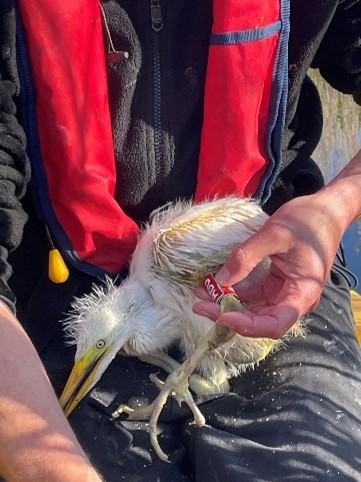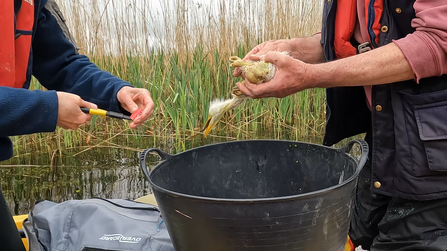Over the last 30 years or so the gangly, beautiful Great White Egret has been travelling north and west. 1994 saw the first breeding record in France, and in 2012 a pair nested for the first time in England – here on the Avalon Marshes. Since then the population has exploded, with year-on-year increases until in 2023 we recorded an amazing 53 successful nests, with no fewer than 88 chicks fledged. But as soon as they can fly, they vanish. So where do they go?
In 2016 we started a colour ringing programme to find out. It isn’t easy to ring chunky chicks sitting on precarious reed nests suspended over deep, peaty water. So we keep an eye on them by drone, and when the time is right we visit the nests by kayak. Each chick gets a bright red ring with three white letters, and within weeks people are sending in sightings from all over the country. Our birds have now been reported from 33 different counties in England as well as from Wales, Scotland and even western Ireland.



